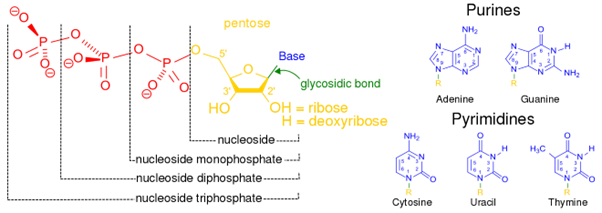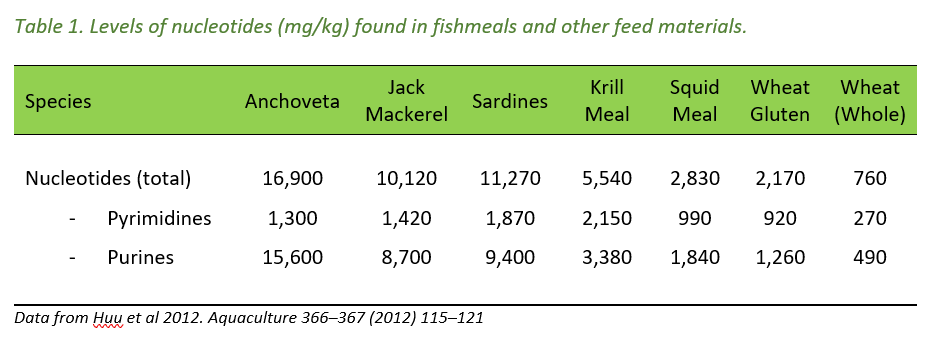This piece was published in the December 2021 edition of FishFirst
Author: Dr Brett Glencross
When we think of fishmeal, in terms of applying it to feeds, usually we think of protein, amino acids and palatability. In some cases, we might stretch this to omega-3 and phospholipids. But had you considered its nucleotide content? Nucleotides are small organic molecules that are the simplest units (the building blocks) underpinning the structures of nucleic acids like deoxyribonucleic acid (DNA) and ribonucleic acid (RNA). Structurally these molecules are composed of three subunits: a nitrogenous base, a five-carbon sugar (ribose or deoxyribose), and at least one phosphate group. Without the phosphate group they are known as nucleosides. Nucleotides can be further classified based on their nitrogenous base structure as either purines (adenine and guanine) or pyrimidines (cytosine, uracil, or thymine) (Figure 1).
Nucleotides play a central role in the cellular metabolism of all organisms. They transfer chemical energy throughout the cell to catalyse the various cellular functions that demand energy. Additionally, nucleotides play an important role in cell signalling and are incorporated into important cofactors of enzymatic reactions. Nutritionally, nucleotides have important biochemical functions, but despite this there are no classical signs of deficiency that have been detailed for most animal species. As such, nucleotides are typically considered to be semi-essential nutrients, and classic dose-response effects have been observed in some species. Notably, nucleotides have been shown to have an influence on a range of immune functions, including lymphocyte maturation, activation and proliferation, macrophage phagocytosis and immunoglobulin responses.
Fishmeals are comparatively rich in these nutrients, with levels in other materials like krill meal (2,700 mg/kg) and wheat gluten (2,170 mg/kg) being substantially lower. Levels of nucleotides in fishmeals range from 10,120 to 16,900 mg/kg (Table 1). The purines predominate nucleotide content of fishmeals, comprising nearly 90% of the total, where as other ingredients tend to have a more even balance between the purines and pyrimidines.
The roles of nucleotides in fish diets initially focused on feed intake stimulation and fish feeding behaviour and it was once thought that the “unidentified growth factor” in fishmeal was actually the nucleotide content. However, more recently the focus has turned to the ability of nucleotides to enhance immunity and disease resistance of a variety of aquaculture species. In aquaculture there has been substantial research has shown that nucleotides have a range of benefits in addition to improving growth, they can improve intestinal structure, increase stress tolerance as well as influence a variety of innate and adaptive immune responses. Notably, many of the species fed nucleotide supplemented diets have shown enhanced resistance to viral, bacterial and parasitic infections. So, next time you think about formulating feeds for any of the variety of aquaculture species that we feed, perhaps it might pay to think beyond the traditional characteristics of fishmeal and consider more that hidden value?

Figure 1. Structure of the nucleotides commonly found in fishmeal [source: https://en.wikipedia.org/wiki/Nucleotide]









